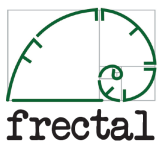Change and a focus on Process
Amidst the complexity of change, the next important common pattern I wanted to explore involves process.
Now process is a word that means many things to many people, but to keep it simple, let me explain it as “what people do”. So most human activity and all change involves people and process.
The changes of the Industrial Revolution and the assembly line approach of Henry Fords Model T highlight the dramatic changes that changes in process have had in modern society. While the manufacturing industry has seen huge changes in process in recent decades (e.g. Lean thinking) which are now impacting on the service industry, deeply complex systems such as healthcare can struggle with process change. Nonetheless the march of process improvement in advancing change continues.
Let us again use the Cynefin framework in order to discuss change and process.
Chaos
Let us start with the challenge of chaos in systems and chaotic processes.
In a chaotic situation, again the key principle is to “do something”, indeed the simpler the better. In a major healthcare incident, in Emergency Medicine we are taught to walk into the ED waiting room to tell the walking wounded to move away from the scene. That is a simple action, but it helps achieve a lot.. move those that can to a place of safety, help differentiate the minor from the major injuries and help focus attention on those most seriously injured.
Its a simple yet effective process in a chaotic situation.
Complex
Let us now look at some patterns in process terms.
Firstly the term process usually has a fractal dimension.. i.e.,
Daily operational processes at the frontline
Weekly/Monthly tactical processes at the term or departmental level
Yearly strategic processes at the enterprise level.
Even within operational processes one can spot fractal patterns in processes depending on how deeply one is looking.
Secondly many processes in the 21st century are very information intensive (e.g. healthcare, management, information technology etc).
Here again we can see the fractal nature of processes with both physical and logical layers, a theme to which we will return later.
Complicated
It is my perspective that the vast majority of people think of process in complicated terms, without looking for common recurring patterns.
This is seen within healthcare, these are the multitude of pathways/protocols currently in use.. often based on specific patient problems (e.g. NICE guidance) that do not integrate well.
Within management this is seen the detailed BPMN analysis of process flows/and/or the value stream mapping of Lean.
Within software engineering this seen when local and specific code is developed rather than reusing a common OO library.
While complicated process are ubiquitous in the modern world, they are often not complex systems aware and so struggle at scale..
Simple
At this layer we see simple reproducible processes all around. They are those that can be easily done with minimal training.
Within healthcare that would be taking a patient vital signs e.g. HR average 60-100, oxygen saturations >95%
Within management this is the book keeping.. 200+200=400
Within software this is the binary stuff that computer processors can handle effortlessly.
As we noted with the last article, the challenge here for leaders is to have an overarching perspective of chaotic/ complex/ complicated and simple processes if tackling complexity to look for those complex process patterns that should be harnessed.
We now move on to look at a common change pattern involving information
- Change is driven by information
- Change- advancing with Technology and Standards
- Change and the pursuit of Value
References:
http://en.wikipedia.org/wiki/Business_Process_Modeling_Notation
Störrle, H (2001) ”Describing Fractal Processes with UML”





Leave a comment